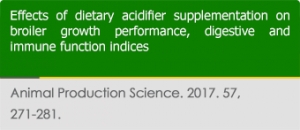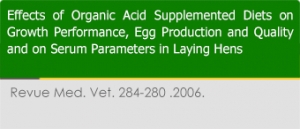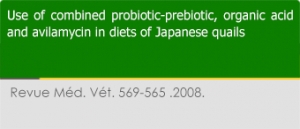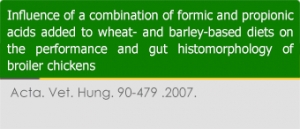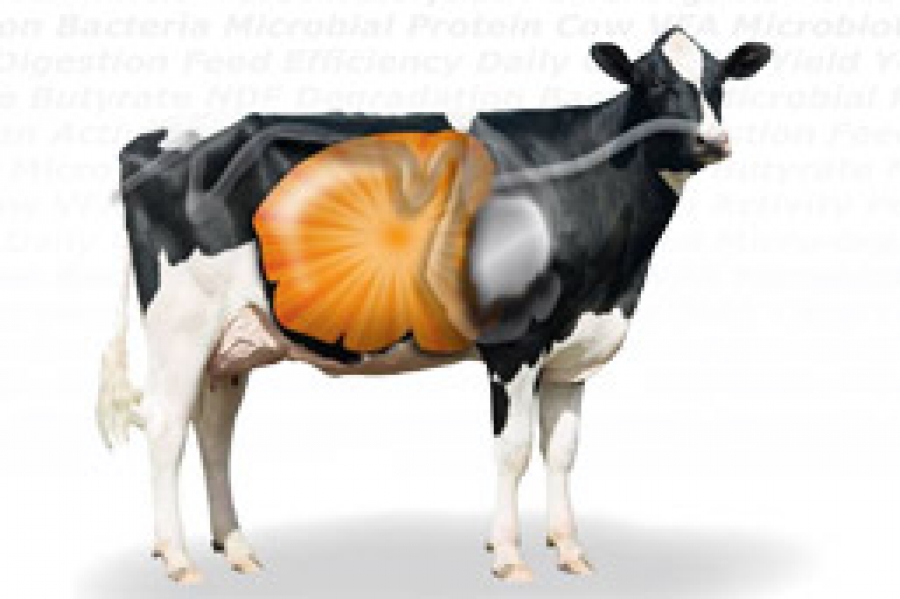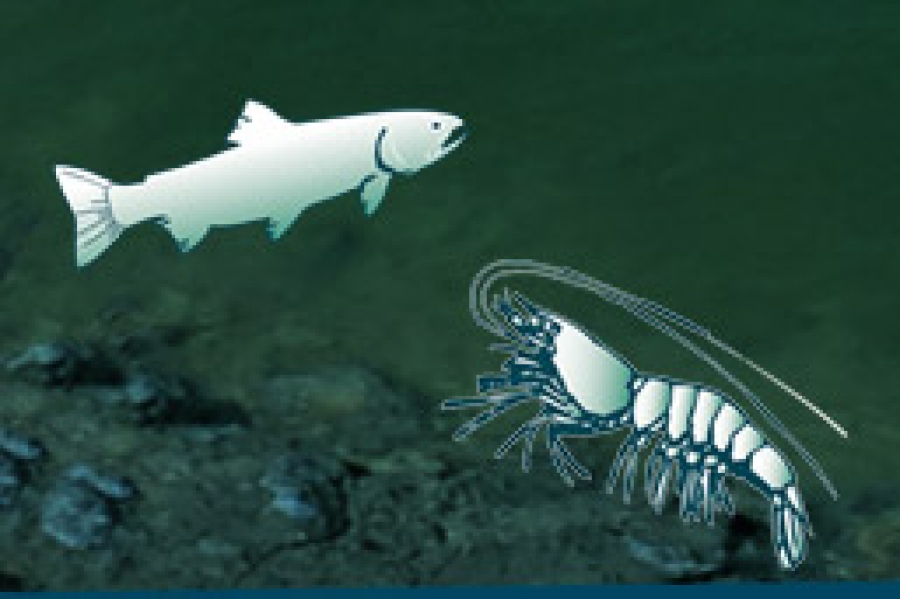Displaying items by tag: organic acid
Simon Menanteau-Ledouble, Ines Krauss, Rui Alexandre Goncalves, Barbara Weber, Gonçalo Abreu Santos, Mansour El-Matbouli
Demand for more environmentally friendly practices have led to the adoption of several feed supplements by the fish farming industry. In the present study, we investigated a commercially available formula that includes a mixture of three compounds: organic acids, a phytochemical and Biomin® Permeabilizing Complex. This mixture demonstrated antimicrobial properties in vitro and was able to inhibit growth of multiple species of aquatic bacterial pathogens, including Aeromonassalmonicida.
Bacterial challenge was performed using A. salmonicida and three exposure routes: intra-peritoneal injection, immersion, and cohabitation.
A. Kovàcs, R. Urbaityte, N. Roth, and S. Weidong
Permeabilizing substances can improve the efficacy of organic acids and phytochemicals.An experiment was conducted to study the effects of dietary supplementation with a conventional acidifier versus a blend of organic acids combined with cinnamaldehyde and a permeabilizing substance (Biotronic Top3, Biomin, Austria) on growth performance, livability and cecum microbiota. Six hundred day-old AAbroiler chicks were randomly assigned to 3 treatments with 4 replicates in each treatment and 50 broilers per replicate. A negative control group received a standard diet, whereas trial group I diet was supplemented with 2 kg of the conventional acidifier and trial group II diet with 1 kg of the combined product. The feeding trial lasted for 42 d. Eight animals from
Angela Riemenspergera; RenataUrbaitytea; Sigrid Pasteiner; Fernando GuilhermePerazzo Costa
In the current study the effects of feeding a mixture of organic acids (OA), a phytochemical (Ph) and a permeabilising substance (P) on growth performance of broilers were investigated in 300 1-d-old Cobb broiler chicken. Birds were divided into 2 groups and fed 2 different diets for 6 weeks. Group 1: control (without OA, Ph, P); group 2: experimental (supplemented with OA, Ph, P mixture at 1kg/t of feed). Final body weight (FBW; g/bird) was significantly increased in group 2 compared to the control group (p<0.05; 2630.0 vs 2756.7). Feed intake (FI; g/bird) was higher in the experimental group (4453.3 vs 4585.0), but differences were not significant (p>0.05). Also improvements in daily weight gain (DWG; g/bird) found in birds fed the experimental diet compared to
IridaPalamidi, VasileiosParaskeuas, Georgios Theodorou, RenataBreitsma, GerdSchatzmayr, Georgios Theodoropoulos, Konstantinos Fegeros and Konstantinos C. Mountzouris
The effect of dietary acidifier (AC) supplementation in combination or not with avilamycin (AV) was evaluated on broiler performance, nutrient digestibility, gizzard pH, activity of digestive enzymes and relative expression of cytokines. A 2×2 factorial experimental design with inclusion of AC (0 and 1 g/kg of diet) and AV (0 and 2.5 mg/kg of diet) as the main factors was implemented. Subsequently, 544-day-old male Cobb broilers were allocated in four treatments (i.e. C – no additions, AC; AV and ACAV), each having eight replicates of 17 broilers, for 6 weeks. Overall bodyweight gain (BWG) was improved (PAC = 0.035) by AC addition. BWG and feed conversion ratio were improved (P < 0.05) by AV addition in all growth periods and overall. Dry matter, organic matter digestibility and
Samli H. E., G. Sirci, J. Lorenzo Bermejo, F. Koc, A. Agma Okur, and N. Senkoylu
The present study investigated the relationship between addition of a commercial organic acid mixture to feed and feed microbiology. Feedstuffs’ composition and duration, temperature and humidity of feed storage were taken into account. The evaluated organic mixture contained formic acid, ammonium formate, propionic acid, ammonium propionate and inorganic phyllosilicate carrier. Microbiological changes were investigated in five types of feed using a 2×2×2 factorial design: organic acid addition (with/without), conditions of storage (228C and 57% relative humidity (HR)/418C and 65% HR) and storage duration (30/60 days). Supplementation of the organic acid mixture has positive effect on feed microbiology.
Samli H. E., G. Sirci, J. Lorenzo Bermejo, F. Koc, A. Agma Okur, and N. Senkoylu
The present study investigated the relationship between addition of a commercial organic acid mixture to feed and feed microbiology. Feedstuffs’ composition and duration, temperature and humidity of feed storage were taken into account. The evaluated organic mixture contained formic acid, ammonium formate, propionic acid, ammonium propionate and inorganic phyllosilicate carrier. Microbiological changes were investigated in five types of feed using a 2×2×2 factorial design: organic acid addition (with/without), conditions of storage (228C and 57% relative humidity (HR)/418C and 65% HR) and storage duration (30/60 days). Supplementation of the organic acid mixture has positive effect on feed microbiology.
Celik, K., I. E. Ersoy, A. Uzatici, and M. Erturk
The experiment described evaluated the effect of a commercial in-feed preparation (Biotronic® SE) involving a mixture of organic acids and salts on California turkey chicks performance. In these experiments, 1-d-old commercial white turkey poults were placed into battery brooders and were given turkey starter feed and water ad libitum. Biotronic ® SE had very small effect on the body weight gain (BWG) when included in the feed and live bird performance was not adversely affected by feeding up to 2.0%. from 0 to 60 days as based groups.
S. Cakir, M. Midilli, H. Erol, N. Simsek, M. Cinar, A. Altintas, H. Alp, L. Altintas, O. Cengiz, A. Antalyali
The aim of the present study was to compare the effects of Biomin®IMBO (combination of probiotic, prebiotic, phytogenic substances and cell wall fragments), of Biotronic (combination of formic and propionic acid based on an inorganic phyllosilicate carrier), of a combination of the Biomin® IMBO and Biotronic and of an antibiotic, avilamycin, as feed additives on the growth performance, several serum parameters and digestive villus height of quails. A total of 300 1-day-old Japanese quail chicks were randomly divided into 5 experimental groups with 4 replicates of 15 birds per replicate.
Nataliya Roth, Thomas Germ, Alfred Klimitsch, Renata Urbaityte, Sabine Nitsch
The inhibitory effect of acids on bacterial growth has long been used to preserve feed from spoilage. The use of organic acids as acidifiers for swine and poultry is also well known. In the present study the antimicrobial activities of formic and propionic acids and their combination were investigated in vitro on E.coli and Salmonella typhimurium, as these pathogens cause problems in animal production. The combination of acids was more effective than the effect of individual acids together. The reason of the synergy between organic acids blends can be the combination of acid with a low pKa, which reduces the pH of the environment of bacterial cells and acid with a high pKa and low molecular weight to ensure an antimicrobial effect inside the cell. The efficacy of the combination of formic and
Senkoylu N, Samli H. E., Kanter M., Agma A
Day-old male chicks were used to test the effects of a combination of formic and propionic acids (CFP) added to wheat- and barley-based diets on the performance and gut histomorphology of broilers. The CFP, containing formic and propionic acids based on an inorganic phyllo-silicate carrier, was added to starter and grower broiler diets of standard (NRC, 1994) or lower nutrient density (LND) using different levels of wheat and barley. Body weight gain (BWG) and feed conversion ratio (FCR) of broiler chicks were significantly (P < 0.001) improved by CFP supplementation at 21 days of age regardless of nutrient density (ND). However, at 35 days of age CFP addition significantly (P < 0.001) increased BWG and FCR. Proventriculus weight was also significantly affected by the dietary treatments.






